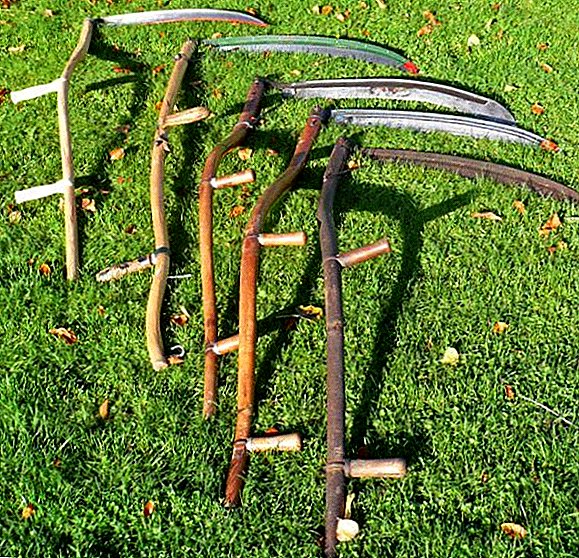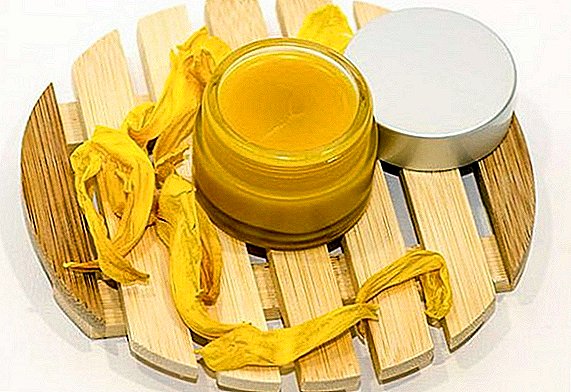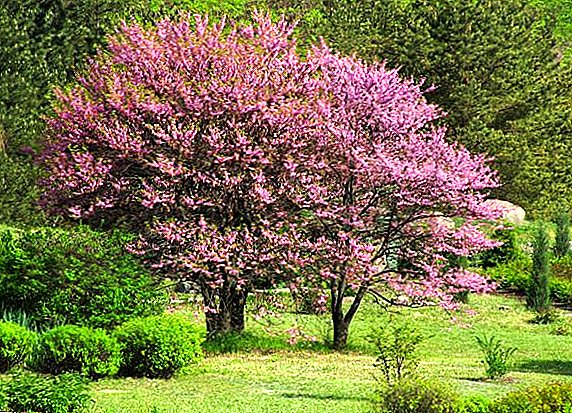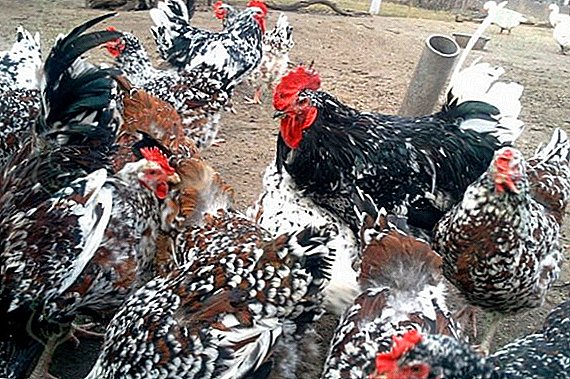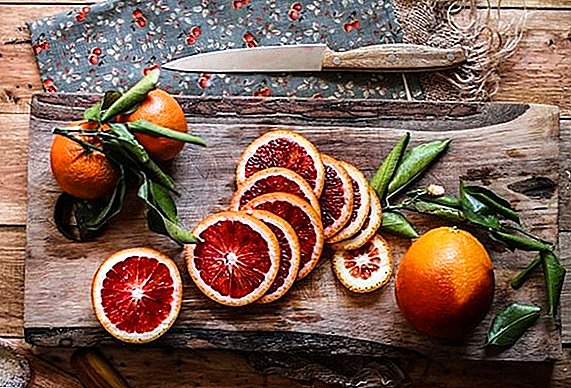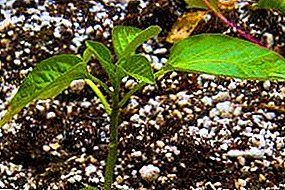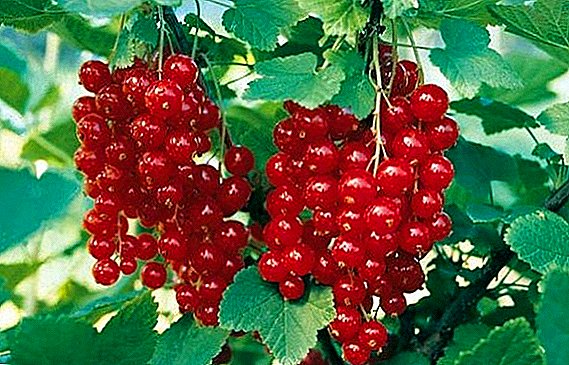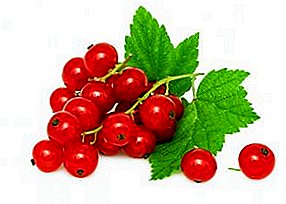 In almost every garden you can find a cozy plot with spreading bushes of red currant, decorated with many scarlet garlands. Simple seasonal care, good yield and unusually useful composition of ripe fruits - these are the main reasons why this crop is so fond of many gardeners. In this article, we want to introduce you to "Natalie" - an unusually fruitful variety of red currants that can conquer your heart.
In almost every garden you can find a cozy plot with spreading bushes of red currant, decorated with many scarlet garlands. Simple seasonal care, good yield and unusually useful composition of ripe fruits - these are the main reasons why this crop is so fond of many gardeners. In this article, we want to introduce you to "Natalie" - an unusually fruitful variety of red currants that can conquer your heart.
Selection
 The creators of the Natali variety were V. M. Litvinov and N. K. Smolyaninova, Russian breeders from the Moscow Institute of Horticulture, GNU VTISP.
The creators of the Natali variety were V. M. Litvinov and N. K. Smolyaninova, Russian breeders from the Moscow Institute of Horticulture, GNU VTISP.
In 1991, by crossing different varieties of red currant, a new species was bred, combining unpretentious care and excellent resistance to frost and diseases affecting horticultural crops.
Read the description and peculiarities of growing varieties of redcurrant "Vixne", "Sugar".
Description and characteristics
Consider the description and characteristics of the bushes and berries of red currant varieties "Natalie".
Shrub
Bushes of red currant in height reach one and a half meters. On an adult healthy bush grows at least 15 shoots. The bark on the branches is colored gray-brown, and the young shoots have purple tips on the tops. The leaves are dull, medium-sized, saturated green color, which acquires a gray shade in the sun. The bush is thick and compact - currant branches grow strictly upward in the first few years, as it grows, it becomes more spreading.
Did you know? From the dried leaves of red and black currants you get a very tasty and healthy vitamin drink. To the leaves contain the maximum amount of vitamin C, they need to be collected before the berries are fully ripe. It is proved that after their maturation the amount of vitamin C is reduced several times.
Berries
The brush with berries growing on thin branches reaches 10 cm in length. On each brush grow rounded berries of a rich red color, slightly elongated at the base. The average weight of the berries is 0.7-1.0 g. The flesh is juicy with a small amount of seeds inside. Taste is sweet with light sourness. 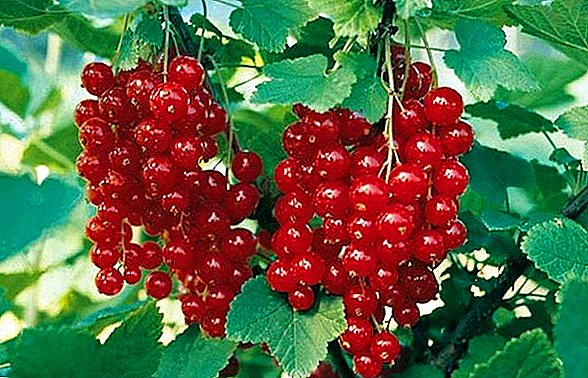
Some features of the variety
This variety has some qualities that have been so loved by many gardeners, and they also favorably distinguish "Natalie" from other varieties of red currant. We will tell about them in more detail.
Disease and pest resistance
One of "Natalie's" advantages is its good stability to many garden diseases, as well as the effects of pests. However, the wrong choice of planting site and violation of the agrotechnology of growing red currant can reduce the plant immunity and make it more susceptible to the causative agents of such plants. fungal diseases:
- Mealy dew is a disease that is capable of infecting not only the plant, but also the soil around it, as well as rapidly spreading to other garden crops. For the treatment of powdery mildew, systemic fungicides are used that treat affected plants and the soil beneath them. For the prevention of using a solution of ash, which sprayed the bushes several times over the summer.
- Anthracnose - its pathogens begin to multiply actively on rainy days and at high humidity. To destroy the spores of this fungus used spraying Bordeaux liquid or copper sulphate. Disease prevention includes the elimination of excessive watering of currant bushes, timely pruning of shoots, as well as regular removal of fallen leaves and weeds growing under the plant.
- Septoria is a dangerous disease that can completely destroy your harvest. For the treatment of this disease, spray the bushes with systemic fungicides. Prophylactic actions include timely pruning of shoots, removal of weeds under a bush, and mulching.
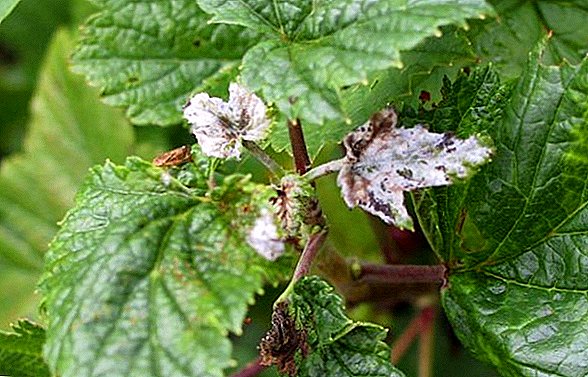
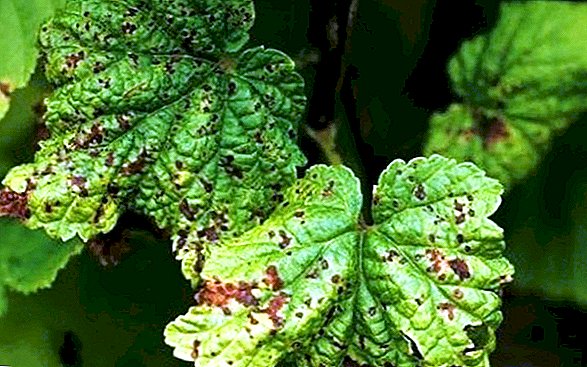
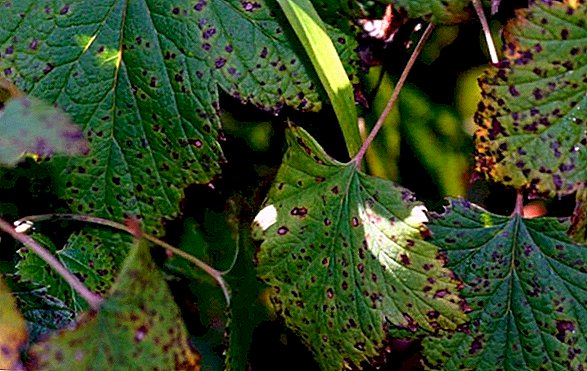
To control the pests of the red currant (leaf aphid, gooseberry sawfly, currant glass bowl) use various insecticides that are used to treat the damaged parts of the plant - “Fitoverm”, “Agravertin”, “Iskra DE”.
Learn how to keep currants from diseases and pests.
Preventive measures include:
- removal of affected leaves and shoots;
- autumn digging of soil around shrubs;
- periodic addition of wood ash to the soil.
Important! It is possible to ward off pests from the red currant by planting beds of fragrant flowers next to the bushes. For example, marigolds - their strong aroma can scare most insects away from your garden beds.
Drought resistance and frost resistance
"Natalie" - moisture-loving varietybut tolerates dry days of summer. It is important to know that the lack of moisture during the flowering and the formation of berries can adversely affect the future yield of red currants. To avoid this, pay close attention to regular watering at this particular time.
This variety is not afraid of cold and can survive the frost -30 ° C. If a lower temperature is expected, then the bushes need additional hiding for the winter period. 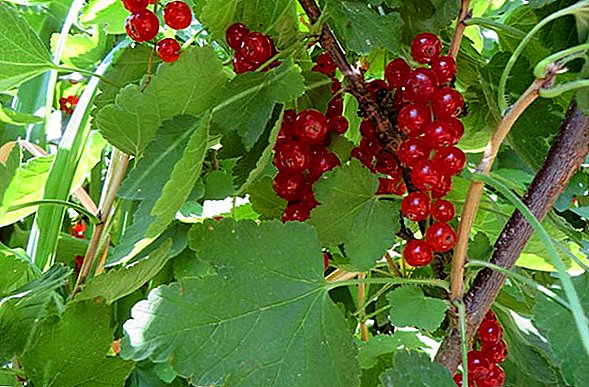
Ripening period and yield
This grade medium early maturity, the first berries you can enjoy in the middle of July. Moreover, it is possible to collect up to 4 kg of very tasty sweet-sour berries from a single bush of red currant. Stable high yield "Natalie" favorably distinguishes this variety among other varieties of garden currants.
Transportability
Variety "Natalie" excellent transport over long distanceswithout losing its presentation and taste. In order to preserve the maximum amount of the harvested crop during transportation, experienced gardeners advise transporting "Natalie" in small containers, thus you will ensure the safety of the lower layer of berries.
Did you know? Wild currant species can be found even in Siberia. But in Australia and Antarctica, this kind of berries does not grow at all.
Directions
This is a table grade universal purpose. In fact, this means that these berries are equally tasty and healthy in both fresh and frozen form. Also, you can safely make jams, compotes and add it to pastries - a rich taste and aroma will not disappear even after heat treatment. 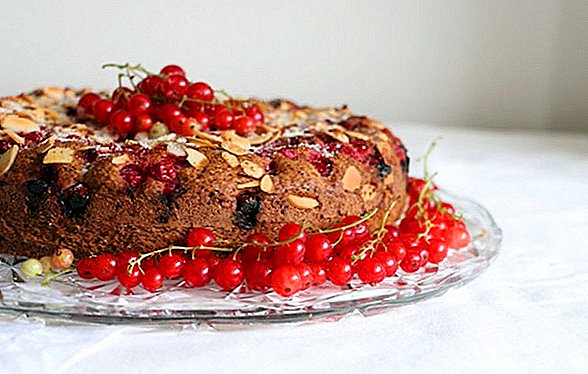
Familiarize yourself with the recipes for preparing red currants: jam, jam, compote.
How to choose seedlings when buying
The selection of red currant seedlings is a very important matter, because the quality and quantity of your future crop depends on the quality of planting material. We have prepared for you useful information about how healthy and ready for outdoor planting should look like. red currant sapling:
- Each seedling must have a pair of strong shoots with a length of at least 30 cm.
- At each shoot there should be at least two healthy buds.
- The root system should consist of 3-4 coarsen yellow roots.
- The lateral roots are well developed and grow in large numbers.
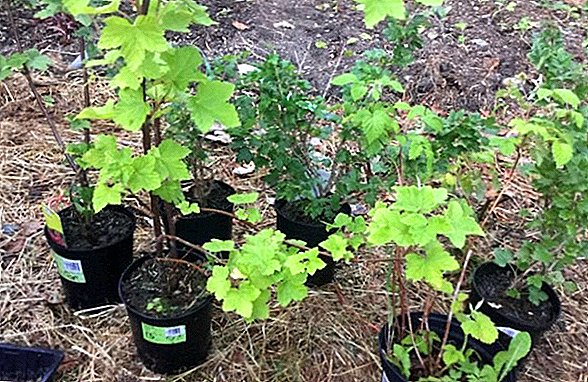 Experienced gardeners are advised to purchase seedlings of any garden crops in specialized nurseries or nurseries. So you will receive a guarantee that the acquired variety is the one you wanted, and the probability that the seed will be of poor quality and infected with diseases or pests will be minimal.
Experienced gardeners are advised to purchase seedlings of any garden crops in specialized nurseries or nurseries. So you will receive a guarantee that the acquired variety is the one you wanted, and the probability that the seed will be of poor quality and infected with diseases or pests will be minimal.
Important! If you do not plan to plant acquired seedlings in open ground, make sure that the red currant root system does not dry out. Wrap the roots with a wet rag or place the seedlings in a bucket of earthen talker (a mixture of soil and water, brought to the consistency of liquid sour cream).
Growing conditions
Despite the simplicity in the care, the variety "Natalie" has a special environmental requirements. Let's tell about them in more detail:
- The soil. For a good harvest and strong shoots, red currants require chernozem, loamy and sandy loam soils that are able to hold moisture in themselves (but it should not stagnate). In addition, in these types of soil lives a huge number of beneficial microorganisms that help the red currant roots to obtain the necessary elements. The recommended acidity is slightly acidic or neutral.
- Ideal landing site. Choose a well-lit place on the site, it is desirable that it was a gentle slope in the north-west direction, away from drafts and cold wind flows.
- The flow of groundwater. Groundwater should not be closer than 1 m to the surface. Too close proximity to the root system of red currants can cause the processes of its rotting, as well as provoke fungal diseases.
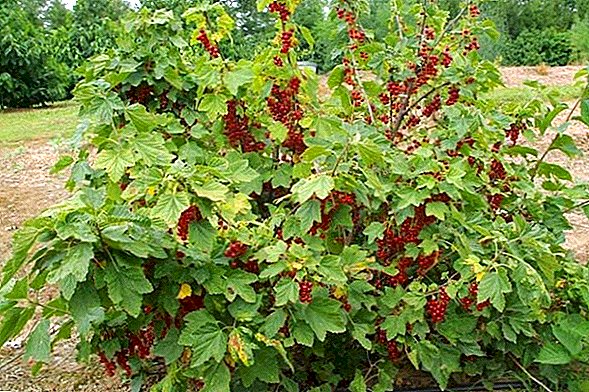
Time and landing scheme
Planting red currant seedlings is possible twice a year: in late April - early May and late September - early October. The main thing is that the soil should be warm enough (the temperature of the soil should not be below +15 ° C), moistened with recent precipitations, and also have a loose structure.
Learn more about the subtleties of planting currants in the fall and spring.
Having chosen the ideal place for planting seedlings, prepare this area before starting work - clean the soil from weeds and roots of other plants, carefully dig up the area and add fertilizer. It is best to use a mixture of humus, wood ash and superphosphate - mix the resulting fertilizer with the soil and evenly distribute it within a radius of one meter at the intended planting site of each bush. Remember that poorly mixed fertilizer can cause root burns and destroy the plant.
After you have purchased the Natalie seedlings and completed the preparatory work on the site, it is time to plant the young red currant bushes in the open ground. The recommended size of the planting pit is 60 * 60 cm. A small layer of a mixture of soil and fertilizer is poured at its bottom and poured at least half a bucket of water. Prepared seedlings are placed in the center of the pit, gently straightening the root system and covered with soil.  Planting currants: a - places of trimming growth, b - root collar. Soil should be tamped a little and watered abundantly. Pay attention to the root neck - it should be above the ground. To sprawling bushes was enough space for the full development of shoots, leave the distance between the bushes 1-1.5 m.
Planting currants: a - places of trimming growth, b - root collar. Soil should be tamped a little and watered abundantly. Pay attention to the root neck - it should be above the ground. To sprawling bushes was enough space for the full development of shoots, leave the distance between the bushes 1-1.5 m.
Did you know? Having eaten only 30-45 delicious sweet-sour currant berries, you will satisfy the daily need of your body for vitamin C.
Basics of seasonal care
In order for red currant to grow well and make you happy with a good harvest, it is important to know the basics of seasonal care for this garden crop.
Watering
In summer, red currants are watered once a week, and on particularly hot days, watering is increased to 2 times a week. Recommended watering - 1.5-2 buckets of water heated to air temperature. Water procedures are especially important during the ripening of berries - during this period it is advisable to water the plant every other day. 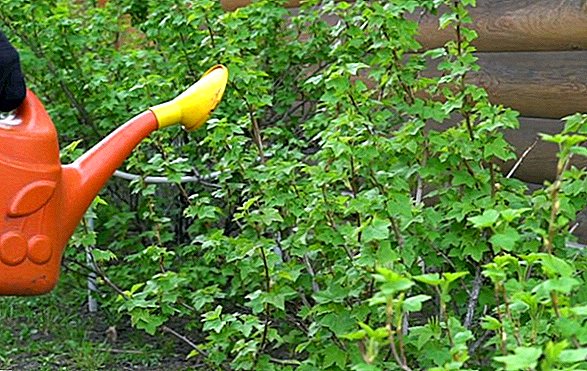
Soil care
In the care of the soil is its mandatory mulching. For the "Natalie" variety, the most useful mulch is slurry or marsh silt. This procedure helps not only to retain moisture in the soil, but also contributes to its saturation with beneficial elements that have a beneficial effect on the growth of shoots and the quality of the crop. It should also be recalled the need for regular loosening of the space under the bush and removal of weeds, but using the soil mulching you can do without these procedures.
We advise you to read about the care of the currants in the spring and autumn.
Top dressing
Red currant bushes begin to need regular fertilizing in the third year of life. In the spring, mainly organic fertilizers are applied - humus or compost, which must be diluted with water before use. In the fall, apply complex mineral supplements based on potassium, phosphorus and nitrogen. This type of fertilizer is mixed with the soil in the autumn digging area. 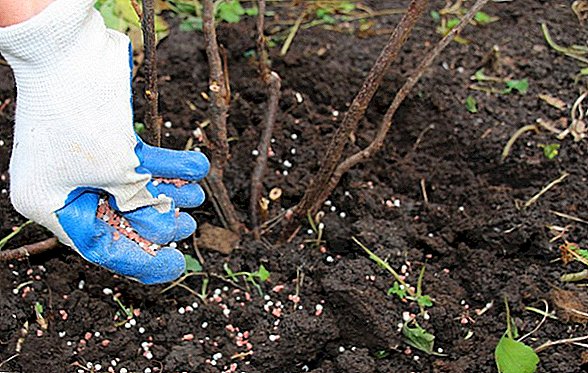
Pruning
For one summer season the bushes repeatedly need pruning. The very first pruning is carried out in early spring - it is important to have time before the plant "wakes up" and starts sap flow in the branches. This pruning involves the removal of dry, old and damaged shoots. After the procedure, all the slices are processed with crushed activated carbon. After some time, branches that grow deep into the bush, as well as too thick areas, are subjected to re-pruning. If they are not thinned out, the air and sunlight will not reach the distant branches, and the berries will be formed only along the outer edge of the bushes.
Periodic sanitary scraps can be repeated, which include:
- removal of broken and dried branches;
- cutting the leaves and shoots with signs of disease or damaged pests;
- removal of underdeveloped branches with a small number of buds.
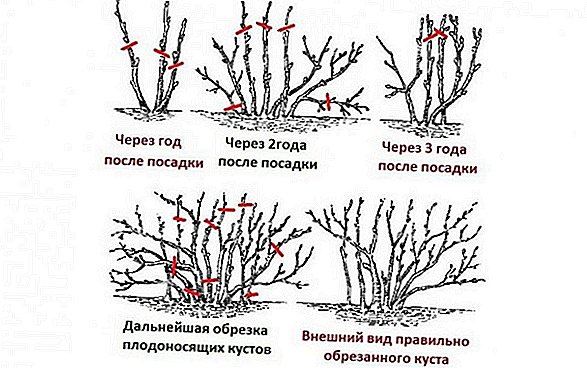 Also, as the growing bush spend planned bush trimming:
Also, as the growing bush spend planned bush trimming:
- in the third year, the top of the bushes is cut by 10-15 cm, out of all the branches, 5-7 of the strongest and with a large number of buds are left, which then become the basis of the bush;
- in the fifth year, rejuvenating pruning of the shoots is carried out and, if necessary, thinned out the bushes of the red currant;
- in the seventh year, they make an obligatory anti-aging pruning of the shoots; old and deformed branches are removed.
Important! When harvesting red currant, you should first lift a sprig, and only then pick off the berries. This method helps to preserve the integrity of the fruit buds, which is very important for the formation of new berries in the next season.
Winter cold protection
Despite the fact that "Natalie" is not afraid of winter frosts, do not neglect hiding bushes for the winter. It is best to cover the bush and the space around the bushes with a thick layer of humus or river sludge, such mulching for the winter not only saves the red currants from the cold, but also serves as an excellent protection from rodents and other small pests who are not averse to eat thin shoots. 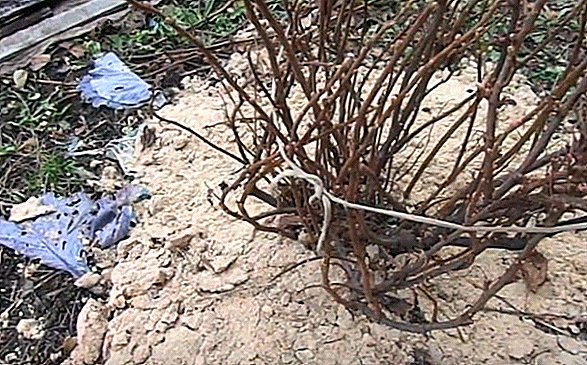
The advantages and disadvantages of the variety
Select the main merits varieties of red currant "Natalie":
- high yield and long term fruiting;
- the ability to transport berries over long distances without losing their shape and taste;
- unpretentious care;
- good resistance to winter frosts;
- good resistance to many garden diseases.
According to many gardeners, the only disadvantage "Natalie" can be called lowering her shoots under the weight of the berries in different directions. When planting seedlings on the site should take into account this feature of the variety and leave additional space between the bushes.
Reviews on a grade of red currant "Natalie"


Using our advice on growing the Natali variety on your plot, by the middle of summer you will be able to collect a huge amount of tasty and very healthy berries, while the harvest will definitely be enough to preserve it for the winter.


